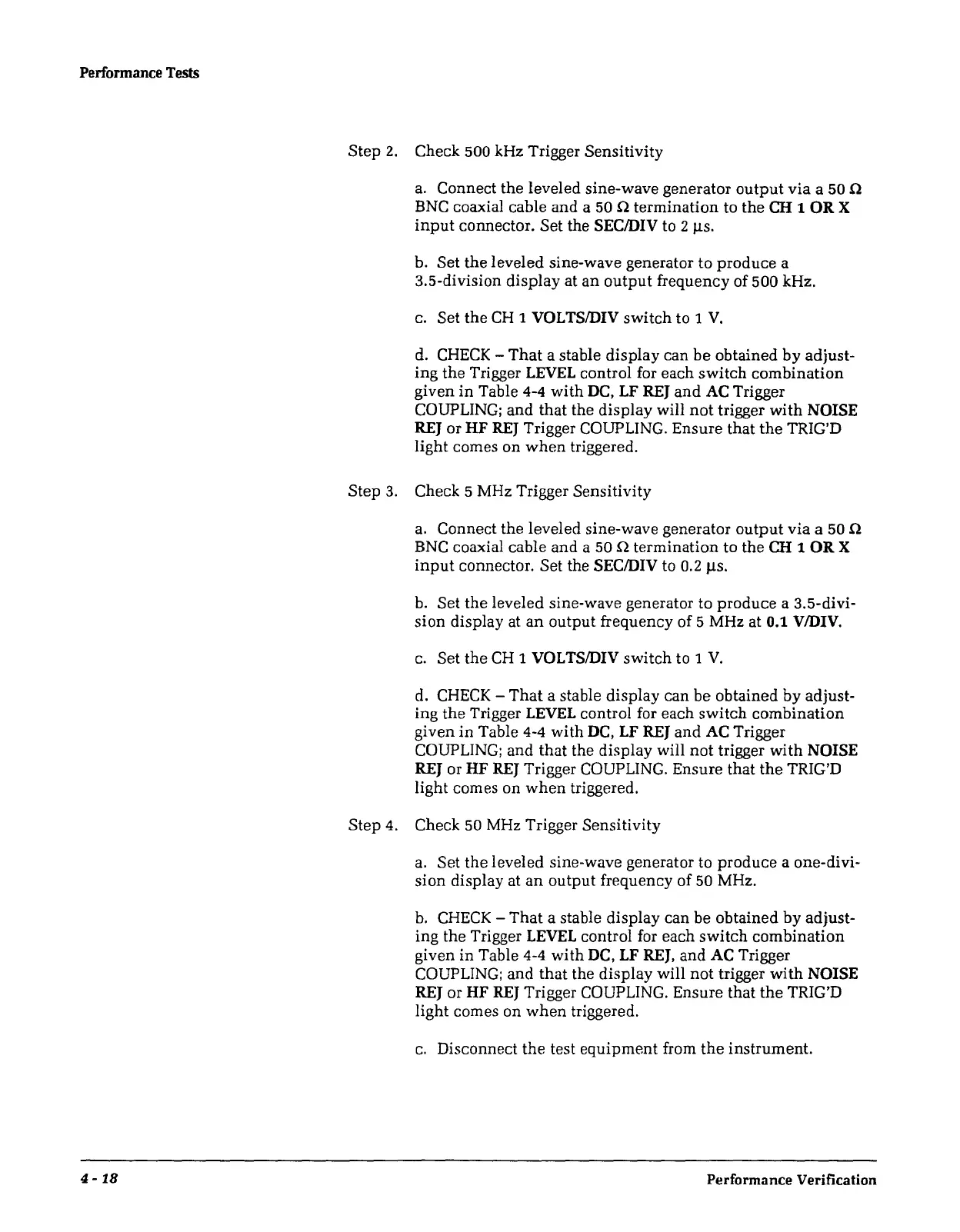Performance
Tests
4-18
Step
2.
Check 500 kHz Trigger Sensitivity
a.
Connect the leveled sine-wave generator
output
via
a 50 n
BNC coaxial cable and a 50 n termination to the
CH
1
OR
X
input
connector. Set the SEC/DIV to 2 µs.
b. Set the leveled sine-wave generator to produce a
3.5-division display at
an
output
frequency of 500 kHz.
c. Set the
CH
1 VOLTS/DIV
switch
to 1
V.
d.
CHECK
-
That
a stable display can
be
obtained
by
adjust-
ing
the Trigger LEVEL control for each
switch
combination
given
in
Table
4-4
with
DC,
LF
REJ
and
AC
Trigger
COUPLING;
and
that
the display will
not
trigger
with
NOISE
REJ
or
HF
REJ
Trigger COUPLING. Ensure that
the
TRIG'D
light comes on
when
triggered.
Step
3.
Check 5 MHz Trigger Sensitivity
a. Connect the leveled sine-wave generator
output
via a 50 n
BNC coaxial cable
and
a 50 n termination to the
CH
1
OR
X
input
connector. Set the SEC/DIV to 0.2 µs.
b. Set the leveled sine-wave generator to produce a 3.5-divi-
sion display at
an
output frequency of 5 MHz at
0.1
V/DIV.
c. Set the
CH
1 VOLTS/DIV
switch
to 1
V.
d.
CHECK
-
That
a stable display can be obtained
by
adjust-
ing
the
Trigger LEVEL control for each switch combination
given
in
Table
4-4
with
DC,
LF
REJ
and
AC
Trigger
COUPLING;
and
that
the display will
not
trigger
with
NOISE
REJ
or HF
REJ
Trigger COUPLING. Ensure that
the
TRIG'D
light comes on
when
triggered.
Step
4.
Check 50 MHz Trigger Sensitivity
a. Set
the
leveled sine-wave generator to produce a one-divi-
sion
display at
an
output frequency of 50 MHz.
b.
CHECK
-
That
a stable display can be obtained
by
adjust-
ing the Trigger LEVEL control for each
switch
combination
given in Table
4-4
with
DC,
LF
REJ,
and
AC
Trigger
COUPLING; and
that
the display will not trigger
with
NOISE
REJ
or HF
REJ
Trigger COUPLING. Ensure that the TRIG'D
light comes on
when
triggered.
c.
Disconnect the test equipment from
the
instrument.
Performance Verification
